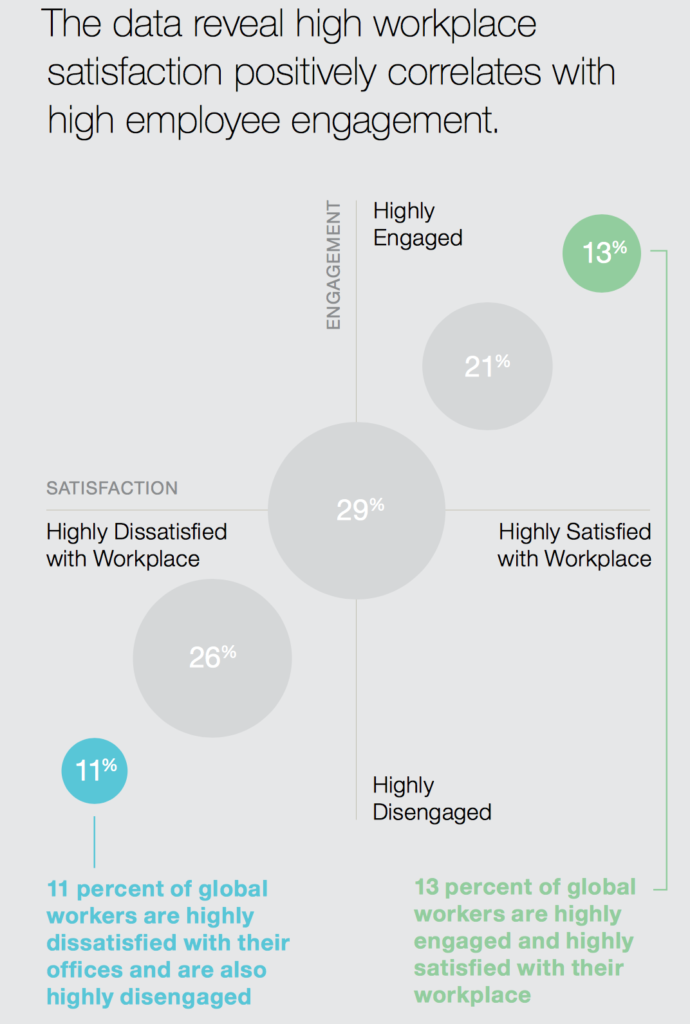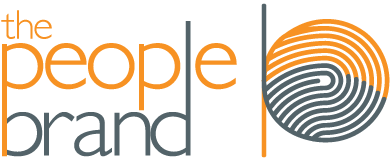When I wrote about ways bosses can be cruel, it was easy to list off several movies and TV shows that portray the workplace in a negative light. You could probably list five or six more examples without thinking too hard about it. This representation in the media is reflective of how we all view our jobs. Let’s face it, we like to complain about work, but is this simply our perception or does work deserve a bad rap?
It seems the workplace needs better marketing.
Workers’ Needs aren’t being Met
Trust is Eroding
Nearly one in three employees don’t trust their employer. And more than two thirds feel that CEOs are too focused on short-term performance. As a result, employees are far less likely to say positive things about the company they work for.
“People scrambled to stuff themselves as if the announcement would be taken back in a day or two. The coffee shops were stripped of pastries. Yahoos packed multiple boxes at the salad bar and hoarded them in break room refrigerators. You’d think that the announcement Marissa made was a coming price increase for lunches, not free food. Good news at Yahoo was treated as suspect and likely to change at any minute.”
Workplaces Aren’t Engaging or Supportive
 Lack of trust is just one indicator of workplace issues. The world’s leading commercial furniture manufacturer Steelcase has spent decades performing research on how people work (full disclosure: Steelcase is the primary manufacturing partner for my employer McCoy-Rockford). Their recent global workplace report shows employee engagement–a key factor in business productivity and operating profit–correlates with workplace satisfaction. This means the negative reputation given to workplaces has real costs associated it.
Lack of trust is just one indicator of workplace issues. The world’s leading commercial furniture manufacturer Steelcase has spent decades performing research on how people work (full disclosure: Steelcase is the primary manufacturing partner for my employer McCoy-Rockford). Their recent global workplace report shows employee engagement–a key factor in business productivity and operating profit–correlates with workplace satisfaction. This means the negative reputation given to workplaces has real costs associated it.The employees of a company are treated, by the law and the accounts, as the property of the owners and are recorded as costs, not assets. This is demeaning, at the very least. Costs are things to be minimized, assets things to be cherished and grown. The language and the measures of business need to be reversed. A good business is a community with a purpose, and a community is not something to be “owned.” A community has members, and those members have certain rights, including the right to vote or express their views on major issues.
Costco’s (relatively) high wages and generous benefits are intentional business decisions. Costco co-founder Jim Sinegal said in the New York Times that Costco’s higher productivity, better customer service, and lower employee turnover rates provide an advantage for Costco versus the competition. “This is not altruistic,” he said. “This is good business.” Costco’s pro-worker, pro-growth model took the national stage in 2013, when CEO Craig Jelinek wrote a public letter urging Congress to increase the federal minimum wage, saying, “We know it’s a lot more profitable in the long term to minimize employee turnover and maximize employee productivity, commitment and loyalty.”
Walmart’s poor customer service is directly related to its low wages, which result in high turnover and leave less experienced employees working the floor. Evidence also increasingly points to a direct relationship between wages and productivity — people work harder when they’re given a raise. Walmart also aggressively keeps its staffing ratios low, cutting employment by 1.4 percent even as it increased its store count by 13 percent. Is it any surprise that sales per employee at Costco are almost double those at Walmart’s Sam’s Club?
So, What Can We Do?
- A compelling mission
- A reputable story
- Social proof
- Sharable content
- Trackable metrics
- Updated communications skills and tools that keep up with recent changes.
Employees are vastly more satisfied and productive, it turns out, when four of their core needs are met: physical, through opportunities to regularly renew and recharge at work; emotional, by feeling valued and appreciated for their contributions; mental, when they have the opportunity to focus in an absorbed way on their most important tasks and define when and where they get their work done; and spiritual, by doing more of what they do best and enjoy most, and by feeling connected to a higher purpose at work.
Work on the Core and Communicate
THE simplest way for companies to take on this challenge is to begin with a basic question: “What would make our employees feel more energized, better taken care of, more focused and more inspired?” It costs nothing, for example, to mandate that meetings run no longer than 90 minutes, or to set boundaries around when people are expected to answer email and how quickly they’re expected to respond. Other basic steps we’ve seen client companies take is to create fitness facilities and nap rooms, and to provide healthy, high-quality food free, or at subsidized prices, as many Silicon Valley companies now do.
Innovative technology companies understand that when employees spend large and intense amounts of time concentrating on the one task, they lose the mental ability to successfully connect memory, stored data and new information together. This is why 15 to 20 minute ping pong breaks are highly encouraged and become part of the office culture at these companies. It serves the purpose of stimulating the brain so more work can be carried out around solving the issue at hand.
Design Space to Support Work
So, the furniture in your office can impact your ability to refresh your mind and your energy. In their research, Steelcase also discovered that one key to happier employees is giving them a sense of choice and control in how they work. This means providing different spaces for the differing ways people work throughout the day. Companies can give employees the choice to use open areas for collaborating with colleagues, but later move to a private space for focused, heads-down work without interruption. The satisfaction of doing great work in a workplace designed to support it goes a long way. Plus, giving employees choices and control is a major improvement over companies forcing their employees to work in the way leaders assume it should be done.Take some time to see how you’re doing in each area we’ve discussed:
- Do you meet employees’ physical, emotional, mental and spiritual needs?
- If not, here is a link to resources from The Energy Project.
- Do your employees trust the company and leadership?
- If not, work on your mission, story and internal communications.
- Does the design of your office support your employees?
- If not, a commercial interior designer can help you reconfigure your space for the work your employees do.
- Alternatively, you can read the McCoy-Rockford blog for tips.
Where to Start?
This may seem like a lot of areas to address, but see where you think you can get the greatest gains. Prioritize your top issue and start there. Little by little, you can start to build your workplace into the best product it can be. In the end, the best marketing is a great product, and THIS is why the workplace needs better marketing.
